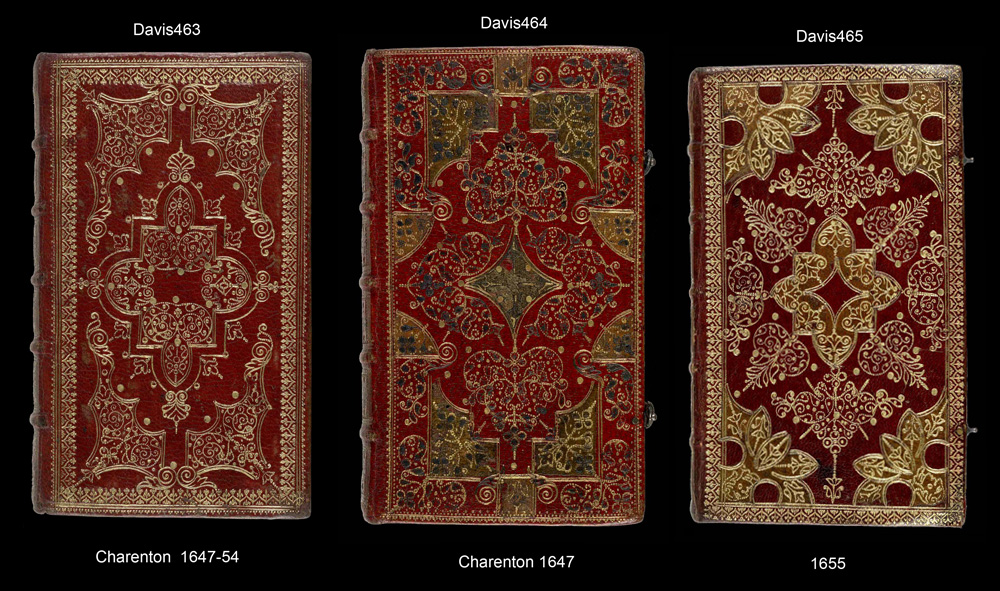

| When I discovered these bindings in the BLDB I studied the tools closely and the results of this study proved that all three bindings were made with the same tools, i.e. tools from the workshop of Antoine Ruette (click here to see this page). At that time I did not realize the importance of the fact that all three books were Charenton publications of Marot's Pseaumes. Thus the fact that the Atelier de Charenton bindings appear to directly copy Ruettes style and tools is perhaps not surprising. What strikes me as odd however, is the fact that Ruette, the Kings official binder, would even consider putting his well known stamps on a Protestant work such as Marot's Pseaumes, (in 1647 the King was but 9 years old and thus it is unlikely that he ordered these bindings). However I will not go into this for the moment as I wish to touch upon another chance discovery. While I was searching the internet for images of Charenton bindings I came across a Southern Methodist University web page entitled Highlights of the Exhibition Six Centuries of Master BookBinding at Bridwell Library, 9 February -29 April 2006. On this page we find... |
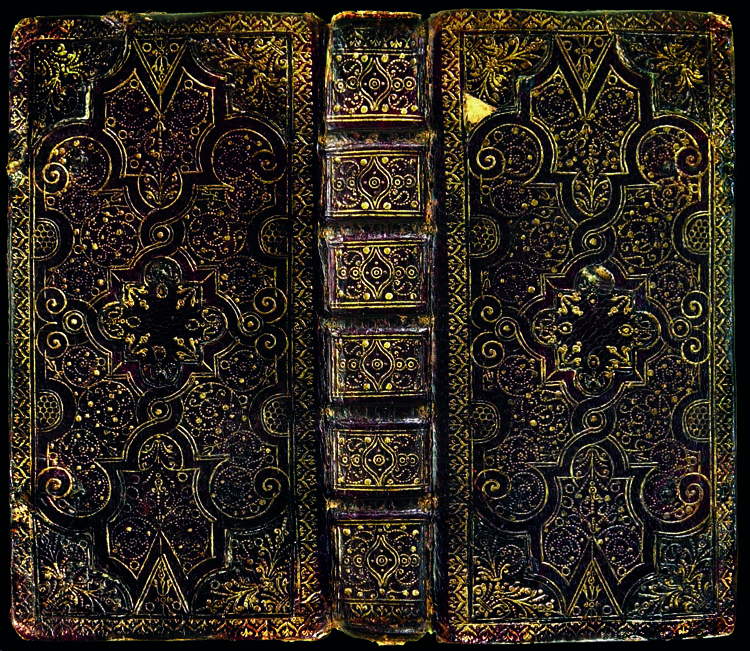
| The SMU image of this binding is too small to make out the imprint detail and so I wrote to them asking for a better photo and Eric White from the Bridwell Library was kind enough to send me a much better photo, (click on the photo above to see the full enlargement). I was expecting to see either a Ruette binding or a Atelier de Charenton example, however here I got a shock, because this binding was quite unlike the others, however after a few moments I realized that the outer roulette was not Antoine Ruette' Roll II but was in fact Roll III a roulette that his father had used on a small 1633 binding reproduced by Isabelle de Conihout & Pascal Ract-Madoux, Reliures françaises du XVIIe siècle, Paris 2002, page 26, example #8. |
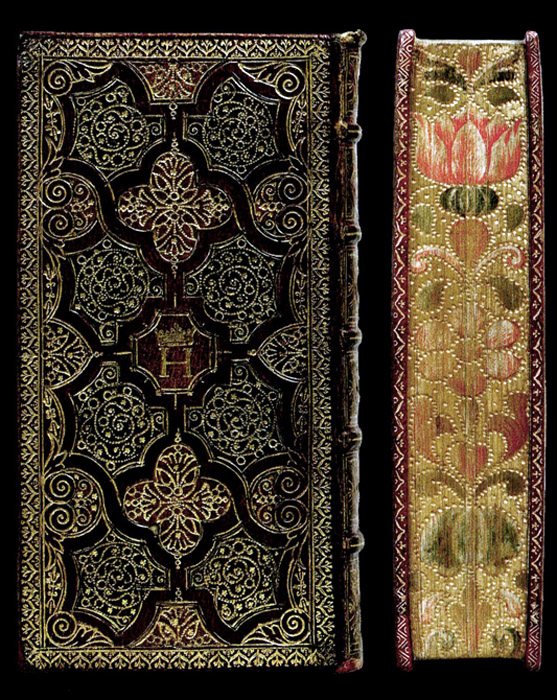

| I have previously described Mace Ruette Roll III (click here to see this page), so I was quite confident that this as the same roulette, however as very few other tools looked familiar on the 1642 binding, I started to extract the other tools starting with the large spirals which did not at first appear to match the Ruette spirals in the bindings shown at the top of this page, then I remembered Esmerian's Mace Ruette example No. 7, which is the only Mace Ruette example that I could think of with such spirals, and here was another huge bingo, the 1642 spirals matched those on example No.7. buzzing with this find I then checked the item description to discover that Esmerian's No. 7 example turns out to be a Charenton Pierre Des-Hayes printing! |
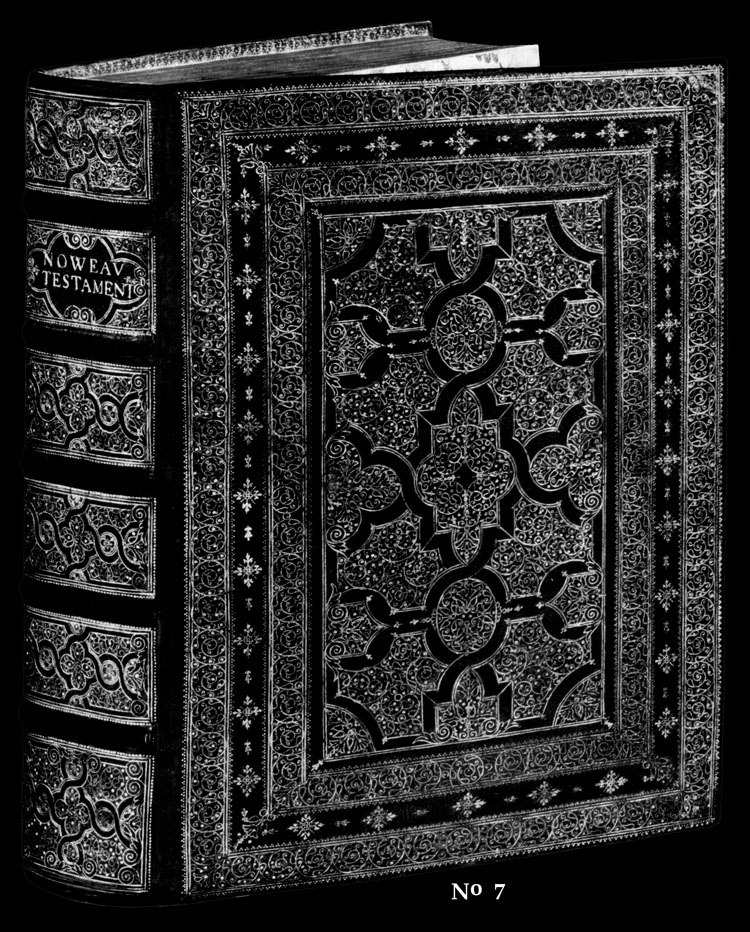
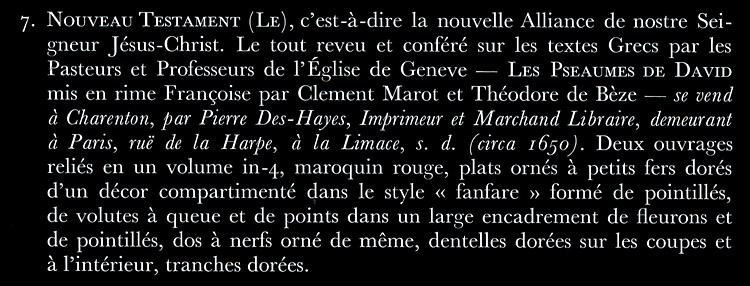
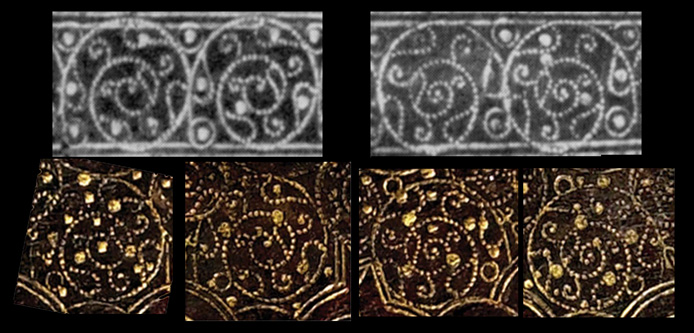
| Comparative Diagram 2 confirms that these spiral imprints are from the same tools and thus that the 1642 binding is a Ruette binding however there remains some rather odd fleuron forms to catalogue, forms that I have not yet encountered in other Ruette bindings. But first we should look at a binding, one that had long been a puzzle for me, as some of the tools seemed rather alien, although I still supposed it to be a Ruette. This binding is reproduction in an old catalogue and will be the subject of even more Ruette discoveries on the next page. |
|
See the next page More Ruette discoveries! Return to the previous page. L'ATELIER DE CHARENTON - imprints |
| Go to Digital Alchemy | Click on this link to visit cyclopaedia.org |